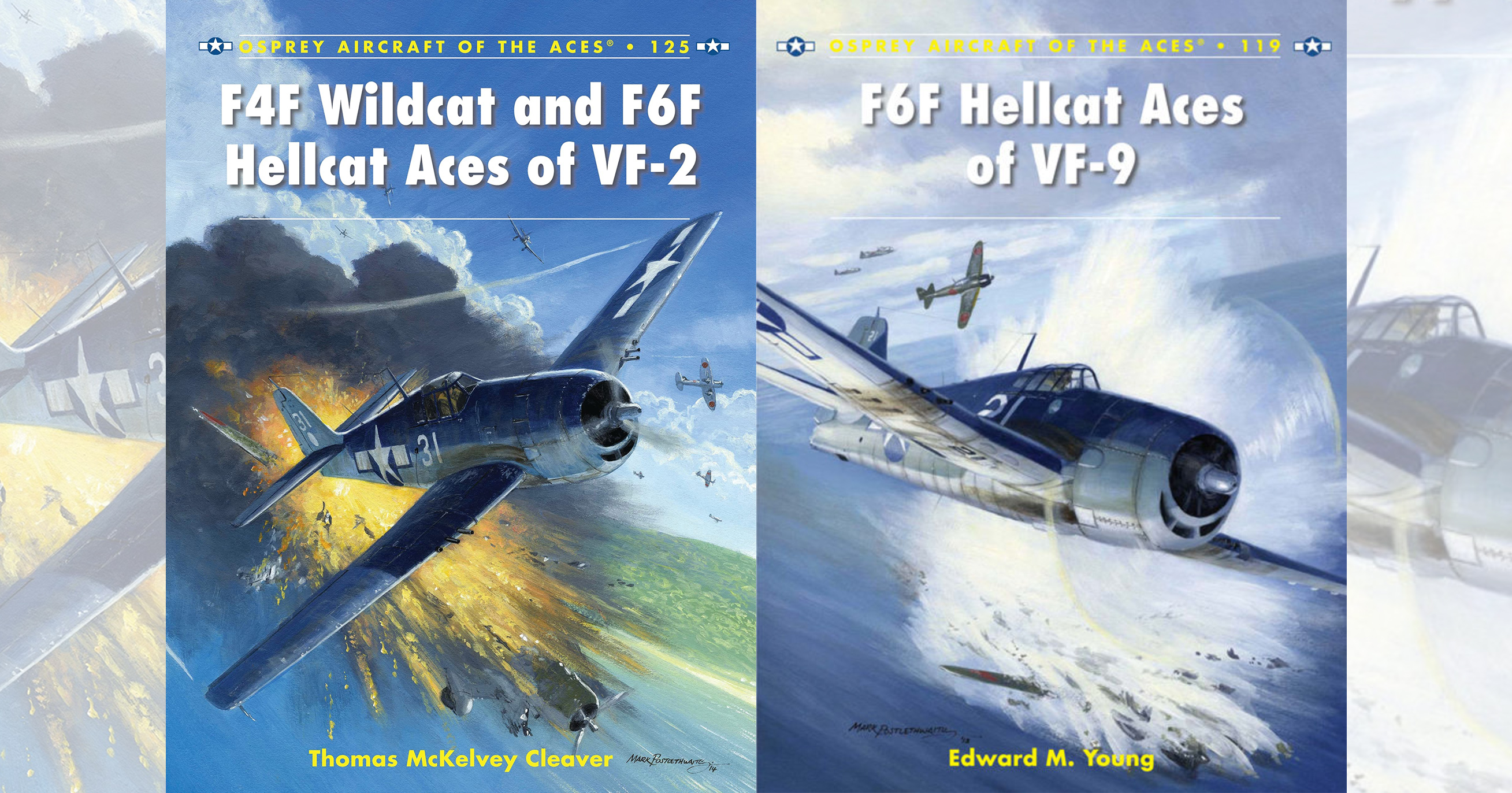F4F Wildcat and F6F Hellcat Aces of VF-2 by Thomas McKelvey Cleaver, Osprey Publishing, Oxford, England, 2014, $22.95.
F6F Hellcat Aces of VF-9 by Edward M. Young, Osprey Publishing, 2014, $22.95.
Although their wartime colors may not be as bright as those of U.S. Army Air Forces units, U.S. Navy squadrons amassed impressive fighting records during World War II, and it’s encouraging to see the Osprey “Aircraft of the Aces” series doing justice to two of the most distinguished. Thomas McKelvey Cleaver, who also recently published a history of Air Group 15 (reviewed in the March 2015 issue), takes a comprehensive approach in F4F Wildcat and F6F Hellcat Aces of VF-2 that chronicles the fighter squadron from its origin in 1921 through its last combat tour in September 1944. Color profiles reflect this scope with a selection of interwar aircraft that were not necessarily flown by future aces—a throwback to the now discontinued “Aviation Elite Units” series.
Still, plenty of aces and their aircraft are represented, including F4F-3 participants in the Battle of the Coral Sea, Medal of Honor recipient Commander Edward H. “Butch” O’Hare’s F6F-3 as an air group commander and Commander William E. Dean’s Hellcats. Besides being the squadron’s leading ace with 11 victories, VF-2 commander Bill Dean made a policy of assigning pilots to missions equally in order to maximize everyone’s combat time. The result was that out of 40 pilots in VF-2’s last tour, a record 28 became aces.
A long-established expert on U.S. naval aviation, Edward Young starts F6F Hellcat Aces of VF-9 with a Brewster F2A-3 Buffalo and some F4F-4s with which the squadron entered combat aboard the carrier Ranger during Operation Torch in November 1942, but his narrative builds serious momentum with the unit’s assignment to the new carrier Essex. Starting with the October 5-6, 1943, raid on Wake Island, VF-9’s Hamilton “One Slug” McWhorter became the first carrier-based Hellcat ace, and went on to be the first carrier-based Hellcat double ace over Truk on February 17, 1944. Among the many other paladins whose aircraft are depicted is Eugene Valencia, whose fourman “mowing machine” wrought havoc on kamikazes during the Okinawa campaign. He survived the war as the Navy’s third-ranking ace with 23 victories.
For anyone who believes the Hellcat has been neglected, these two books should help address that deficiency immeasurably.
Originally published in the May 2015 issue of Aviation History. To subscribe, click here.





